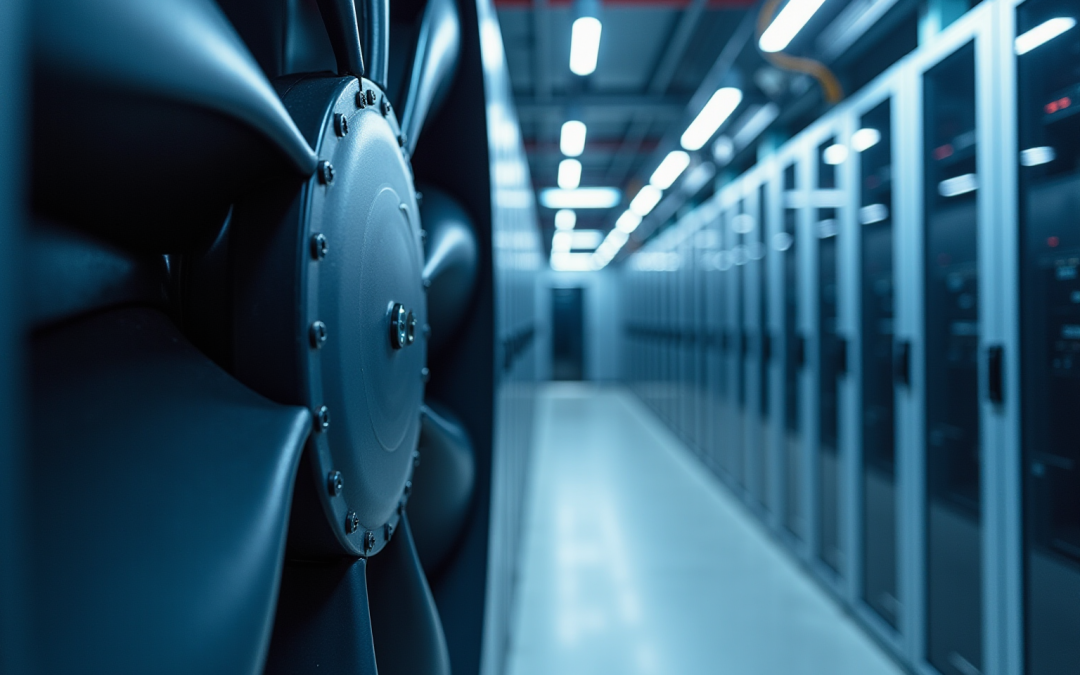Overview
The best practices for utilizing large fans in electronics cooling are crucial for optimal performance. First, it is essential to assess thermal requirements to ensure that cooling needs are met effectively. Next, optimizing the placement of fans is vital for achieving efficient airflow, which significantly enhances cooling efficiency. Furthermore, implementing regular maintenance routines is necessary to sustain fan performance over time.
These practices underscore the importance of proper fan integration and upkeep, which are pivotal in enhancing both cooling efficiency and reliability in electronic systems. By adhering to these guidelines, professionals can ensure that their electronic systems operate at peak performance, ultimately leading to improved longevity and reliability.
Introduction
The increasing complexity of electronic devices has rendered effective cooling solutions more critical than ever. Large fans play a pivotal role in maintaining optimal thermal conditions, ensuring that sensitive components operate efficiently and reliably. This article delves into best practices for utilizing large fans in electronics cooling, exploring their various types, integration strategies, and maintenance tips.
How can engineers leverage these powerful tools to enhance performance while mitigating potential challenges in thermal management?
Understand the Role of Large Fans in Electronics Cooling
Large blowers are essential in electronics cooling, significantly enhancing airflow and facilitating heat dissipation from critical components. Gagner-Toomey Associates, the world’s largest producer of standard and custom air-movers, provides an extensive range of DC input tube axial devices (ranging from 15 to 280mm) and centrifugal blowers (from 15 to 225mm). These devices are engineered for optimal performance, efficiency, and low noise, making them particularly effective in high-density applications where heat generation is substantial. By circulating large volumes of air, Gagner-Toomey’s devices maintain a stable thermal environment, preventing overheating and ensuring that electronic equipment operates within designated temperature ranges.
Understanding the movement patterns of air and the thermal characteristics of your setup is crucial for selecting the appropriate fan arrangement. This choice can significantly influence overall performance and reliability. For example, in power management systems, the large fan from Gagner-Toomey effectively dissipates heat generated by power transistors and other components, thereby enhancing efficiency and prolonging the lifespan of the equipment. Furthermore, these fans can be strategically positioned to establish optimal airflow routes, minimizing hotspots and improving temperature regulation. With Gagner-Toomey’s innovative thermal management solutions—including integrated temperature regulation systems and custom designs—engineers can achieve superior performance tailored to their specific applications. Most models also offer IP protection upon request, further enhancing their suitability for diverse environments.
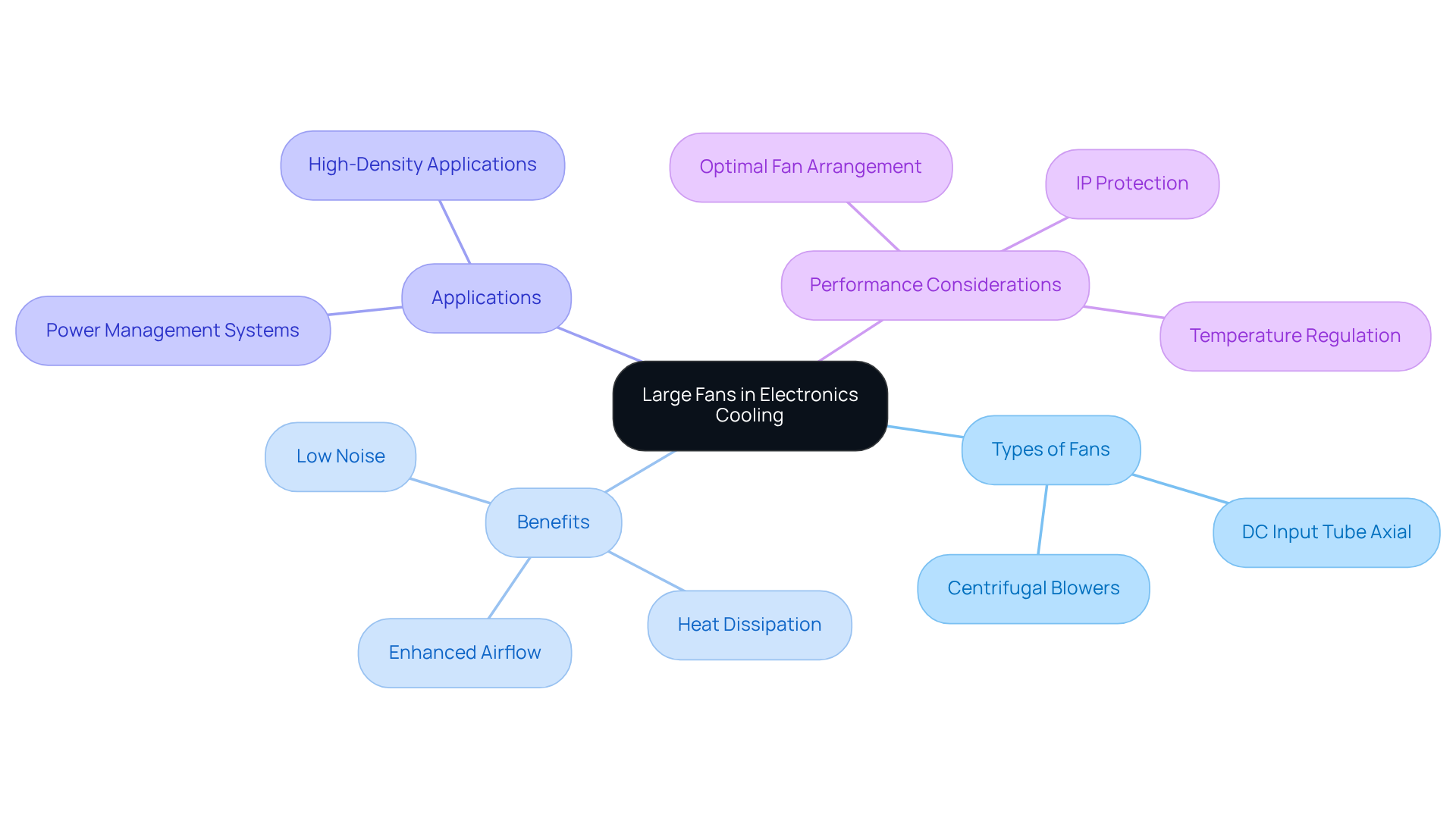
Explore Types of Large Fans for Effective Cooling Solutions
When selecting large blowers for electronics thermal management, it is crucial to consider the various types available, each designed for specific applications. Gagner-Toomey Associates, recognized as the world’s largest manufacturer of standard and custom air-movers, provides an extensive product line that is optimized for performance, efficiency, and low noise. The common types include:
- Axial Units: Known for their substantial air movement capacities, these devices are ideal for cooling expansive areas and are frequently employed in server rooms and industrial applications. Gagner-Toomey offers DC input Tube Axial blowers in sizes ranging from 15 to 280mm.
- Centrifugal Blowers: With enhanced pressure capabilities, centrifugal blowers are suitable for applications requiring directed air movement, such as in enclosures or ducted systems. Gagner-Toomey’s comprehensive portfolio includes DC input Centrifugal Blowers, available in sizes from 15 to 225mm.
- Blower Units: These devices provide focused airflow and are commonly utilized in scenarios where space is limited but significant temperature reduction is necessary. Gagner-Toomey’s miniature blower solutions cater to consumer applications and compact cooling needs, starting from sizes as small as 15x3mm.
- EC Devices: Electronically commutated units are energy-efficient and offer variable speed control, making them ideal for applications where noise reduction and energy savings are priorities. Gagner-Toomey’s EC units and blowers range in size from 120 to 910mm.
Understanding the strengths and weaknesses of each fan large type empowers engineers to tailor their thermal solutions effectively, addressing specific thermal management challenges with Gagner-Toomey’s innovative offerings.
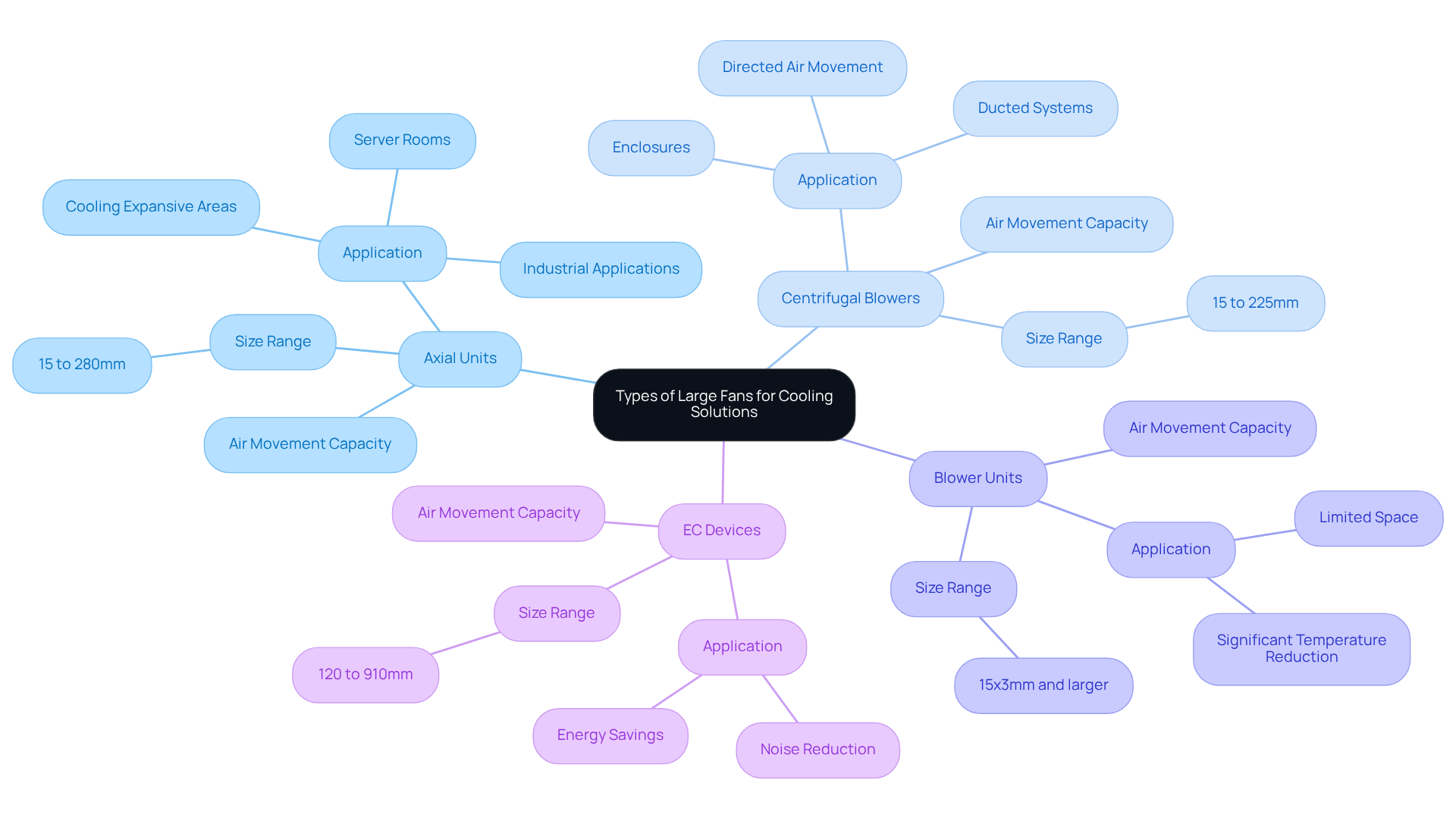
Implement Best Practices for Integrating Large Fans in Cooling Systems
To effectively integrate large fans into your cooling systems, it is crucial to adopt the following best practices:
-
Assess Thermal Requirements: Begin by analyzing the thermal load of your system. This assessment is vital to ascertain the essential ventilation and temperature control capacity needed to maintain optimal performance.
-
Enhance Placement of Cooling Devices: Strategically arrange cooling units to establish efficient air movement patterns. This ensures that cool air reaches heat-producing elements while warm air is effectively discharged, maximizing cooling efficiency.
-
Use Ducting When Necessary: In scenarios where space is limited, consider employing ducting. This approach directs airflow more effectively, thereby improving overall cooling performance.
-
Implement Variable Speed Control: Utilize devices equipped with variable speed capabilities. This allows for dynamic adjustments based on thermal conditions, which enhances energy efficiency and reduces operational noise.
-
Conduct Regular Performance Evaluations: It is essential to monitor fan performance and equipment temperatures consistently. This practice helps identify potential issues early, allowing for timely adjustments and maintenance.
By adhering to these practices, engineers can ensure that a fan large enough to meet the requirements is integrated seamlessly into their cooling systems, thereby maximizing performance and reliability.
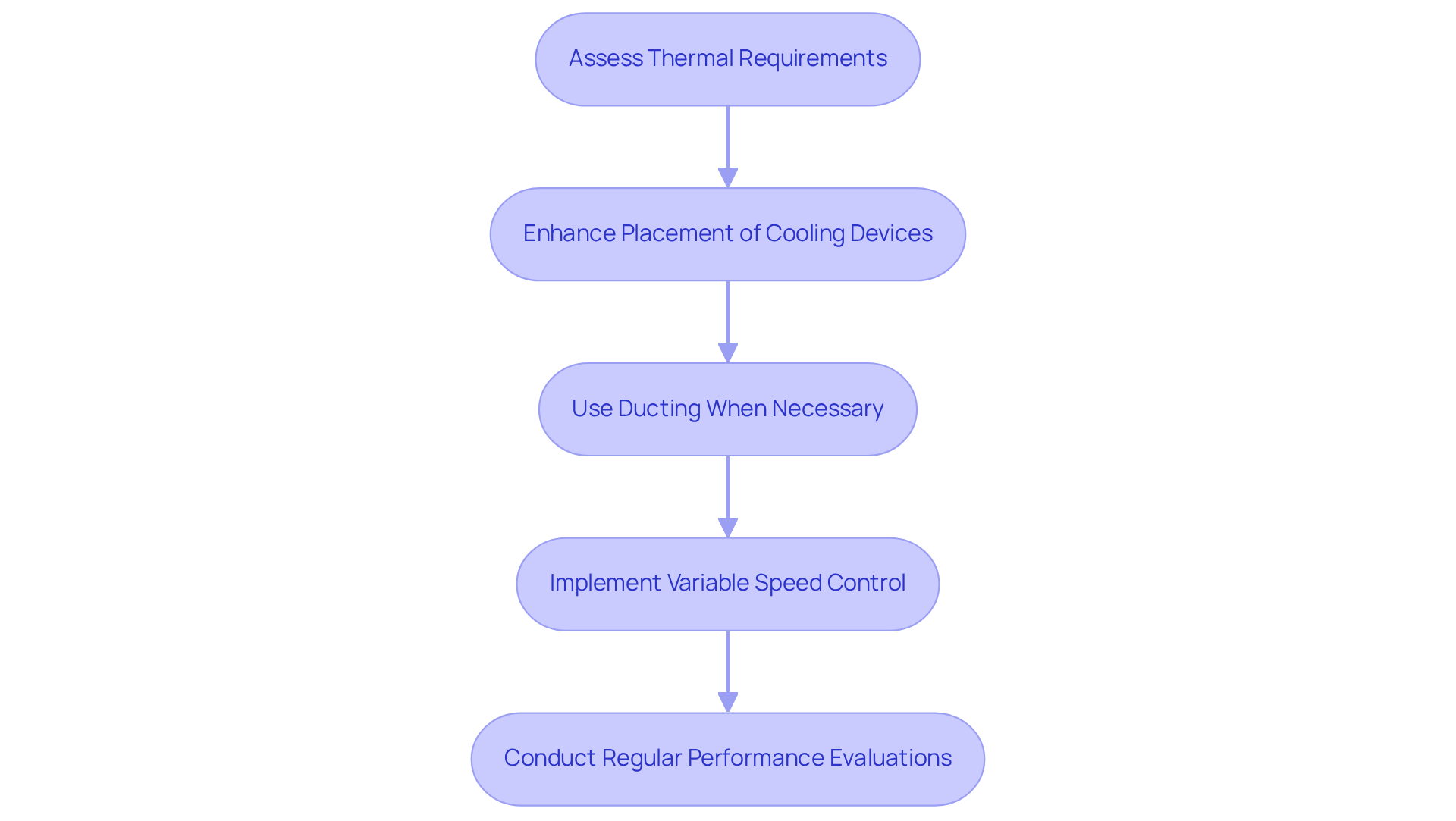
Maintain and Troubleshoot Large Fans for Optimal Performance
To maintain and troubleshoot large fans effectively, it is essential to consider the following strategies:
- Regular Cleaning: Dust and debris can accumulate on fan blades and housing, significantly reducing efficiency. Scheduling regular cleaning is vital to maintain optimal airflow and performance.
- Inspect Bearings and Motors: Checking for wear and tear on bearings and motors is crucial, as these components are critical for fan operation. Promptly replacing any worn parts can prevent unexpected failures and ensure reliability.
- Monitor Noise Levels: Unusual noises can indicate mechanical issues. It is important to regularly monitor fan noise and investigate any changes to identify potential problems early, thereby mitigating risks.
- Check Electrical Connections: Ensuring that all electrical connections are secure and free from corrosion is necessary, as poor connections can lead to fan malfunctions. Regular inspections can help maintain system integrity.
- Implement Predictive Maintenance: Utilizing monitoring tools to track fan performance metrics allows for predictive maintenance, enabling proactive measures to address issues before they escalate into failures.
By adopting these maintenance practices, engineers can ensure that fan large systems operate at peak performance, thereby contributing to the overall efficiency and reliability of electronic cooling systems.
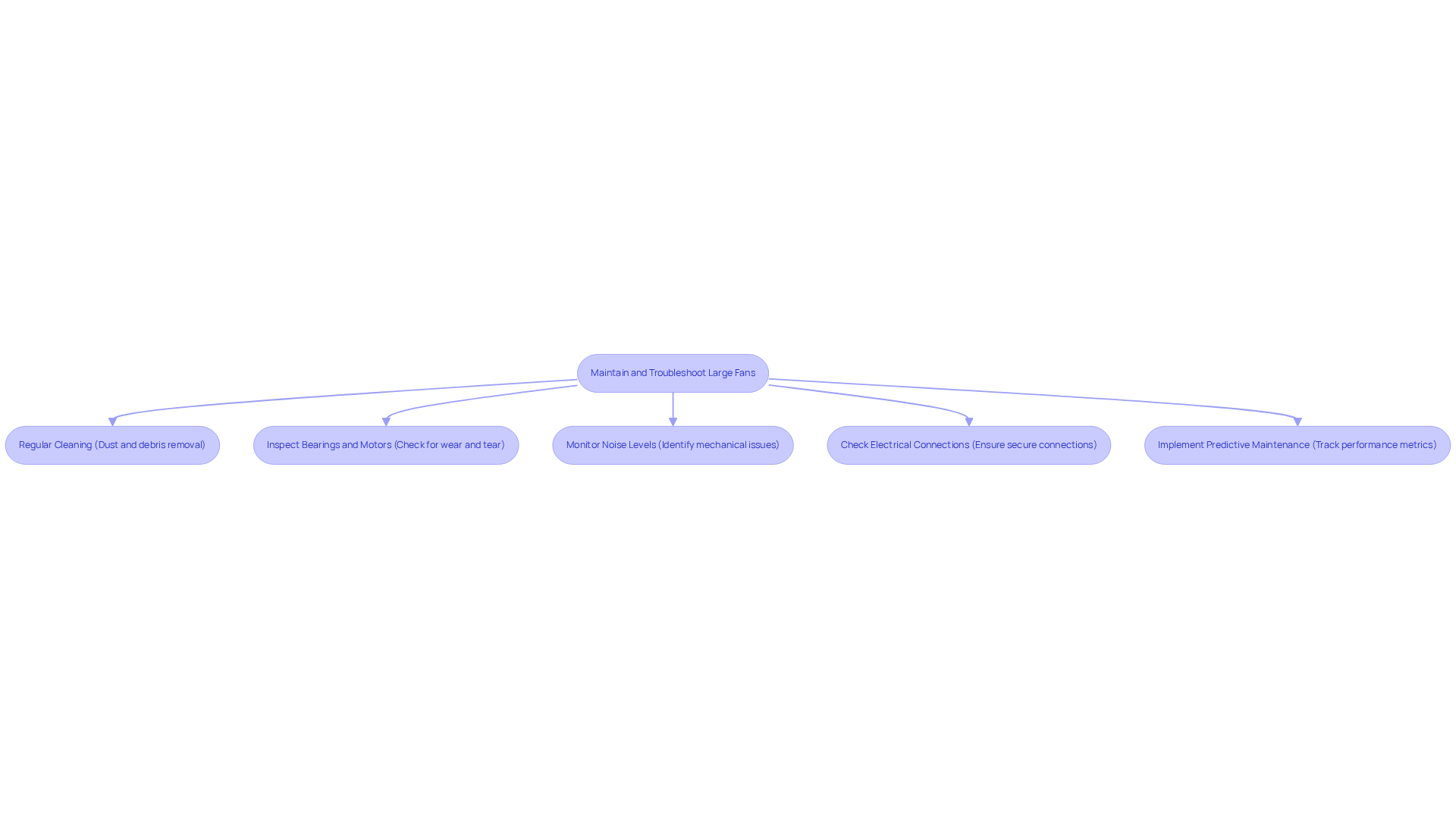
Conclusion
Large fans play a pivotal role in the effective cooling of electronic systems, ensuring optimal performance and longevity of equipment. By enhancing airflow and facilitating heat dissipation, these devices are indispensable in preventing overheating in high-density applications. Understanding the intricacies of fan types and their specific applications allows engineers to make informed decisions that enhance thermal management strategies.
The article delves into various types of large fans, including:
- Axial units
- Centrifugal blowers
- EC devices
Each designed to meet distinct cooling needs. Key best practices for integrating these fans into cooling systems include:
- Assessing thermal requirements
- Optimizing placement
- Utilizing ducting
- Implementing variable speed controls
Additionally, regular maintenance and troubleshooting practices are essential to sustain peak performance and reliability.
Ultimately, leveraging the capabilities of large fans not only improves cooling efficiency but also contributes to the overall effectiveness of electronic systems. As technology continues to evolve, adopting these best practices and understanding the significance of large fans will be crucial for engineers aiming to optimize thermal management in their designs. Emphasizing proactive measures and strategic planning can lead to enhanced performance and prolonged equipment lifespan, underscoring the importance of effective cooling solutions in today’s electronic applications.
Frequently Asked Questions
What is the role of large fans in electronics cooling?
Large fans are essential for enhancing airflow and facilitating heat dissipation from critical components in electronics cooling.
Who is Gagner-Toomey Associates and what do they offer?
Gagner-Toomey Associates is the world’s largest producer of standard and custom air-movers, offering a wide range of DC input tube axial devices (15 to 280mm) and centrifugal blowers (15 to 225mm).
What are the key features of Gagner-Toomey’s cooling devices?
Gagner-Toomey’s devices are engineered for optimal performance, efficiency, and low noise, making them effective in high-density applications with substantial heat generation.
How do large fans help maintain a stable thermal environment?
By circulating large volumes of air, these fans prevent overheating and ensure that electronic equipment operates within designated temperature ranges.
Why is understanding air movement patterns important when selecting fans?
Understanding air movement patterns and thermal characteristics is crucial for selecting the appropriate fan arrangement, which can significantly influence overall performance and reliability.
How do large fans from Gagner-Toomey enhance efficiency in power management systems?
They effectively dissipate heat generated by power transistors and other components, thereby enhancing efficiency and prolonging the lifespan of the equipment.
Can the positioning of these fans affect temperature regulation?
Yes, fans can be strategically positioned to establish optimal airflow routes, minimizing hotspots and improving temperature regulation.
What additional features do Gagner-Toomey’s thermal management solutions offer?
Their solutions include integrated temperature regulation systems and custom designs tailored to specific applications.
Is IP protection available for Gagner-Toomey’s fan models?
Yes, most models offer IP protection upon request, enhancing their suitability for diverse environments.

